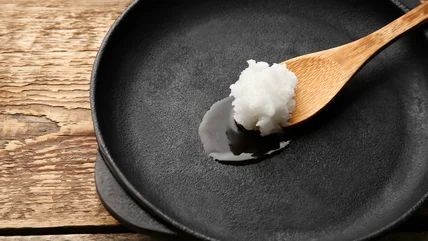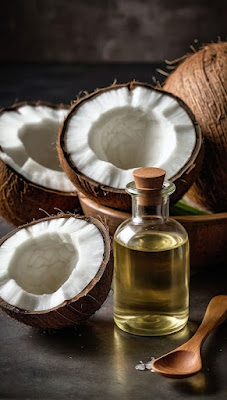Coconut oil hair application: Even distribution, scalp to ends, leave-in or rinse-out
Coconut Oil for Hair: How to Apply for Maximum Benefits
Coconut oil has been a haircare staple for centuries, prized for its ability to nourish, strengthen, and revitalize hair. Packed with fatty acids like lauric acid, it penetrates the hair shaft better than many other oils, offering deep hydration and protection. Here’s a comprehensive guide to using coconut oil for hair the *right* way to unlock its full potential.
*Why Coconut Oil Works Wonders for Hair*
1. Deep Moisturization: Mimics natural hair oils, preventing dryness and split ends.
2. Reduces Protein Loss: Strengthens hair by minimizing keratin damage during washing or styling.
3. Fights Frizz and Damage: Forms a protective barrier against heat, pollution, and UV rays.
4. Anti-Dandruff Properties: Its antifungal properties soothe scalp irritation and flakiness.
5. Promotes Growth: Stimulates blood circulation when massaged into the scalp.
*Step-by-Step Guide to Applying Coconut Oil*
1. Choose the Right Coconut Oil
- Opt for organic, virgin, cold-pressed coconut oil (unrefined) to retain nutrients.
2. Prep Your Hair
- Start with dry or slightly damp hair. Avoid soaking wet hair, as oil and water repel.
- Section hair for even coverage, especially if you have thick or curly hair.
3. Warm the Oil
- Scoop 1–3 tablespoons (depending on hair length) into a bowl.
- Warm it slightly by placing the bowl in hot water—*never microwave*(nutrients can break down).
4. Apply Strategically
- Scalp Massage: Use fingertips to gently massage oil into the scalp for 5–10 minutes. This boosts circulation and ensures absorption.
- Hair Lengths: Work the oil from mid-lengths to ends, where damage is most common. Avoid roots if you have oily hair.
5. Leave It In
- For a quick treatment: Leave on for *30–60 minutes.
- For intense repair: Leave overnight with a shower cap to avoid staining pillows.
6. Wash Thoroughly
- Use a mild shampoo. You may need two washes to remove all residue.
- Condition as usual to restore softness.
*Pro Tips for Enhanced Results*
- Mix with Essential Oils: Add 2–3 drops of rosemary or tea tree oil for extra scalp health.
- Heat Therapy: Wrap hair in a warm towel after applying oil to boost absorption.
- Pre-Wash Treatment: Apply before shampooing to prevent stripping natural oils.
- Leave-In Option: Rub a pea-sized amount on ends post-wash to tame frizz (only for thick/coarse hair).
*Avoid These Common Mistakes*
-Overusing: Too much oil can clog hair follicles or weigh hair down. Start with small amounts.
- Skipping Patch Tests: Test on a small skin area first to rule out allergies.
- Using Low-Quality Oil: Refined or hydrogenated oils lack nutrients.
*Tailor to Your Hair Type*
- Curly/Coily Hair: Focus on ends; use weekly to combat dryness.
- Fine/Oily Hair: Apply sparingly and avoid the scalp. Use biweekly.
- Damaged/Color-Treated Hair: Combine with honey or aloe vera for extra repair.
- Dandruff-Prone Hair: Mix with lemon juice or apple cider vinegar for antifungal benefits.
*How Often Should You Use Coconut Oil?
- Dry/Damaged Hair: 2–3 times weekly.
- Normal/Oily Hair: Once a week or every 2 weeks.
*Final Thoughts*
Coconut oil is a versatile, affordable solution for healthier hair—but consistency is key. Pair it with a balanced diet and gentle haircare practices for long-term results. Whether you’re battling split ends, dryness, or a flaky scalp, this natural elixir can transform your hair when used correctly.
Bonus: Store coconut oil in a cool, dark place to prevent rancidity. A little goes a long way!
*Have questions? Check out our FAQ below or share your coconut oil success stories in the comments!*
This guide balances science-backed methods and practical tips to help readers maximize coconut oil’s benefits without common pitfalls.


















No comments